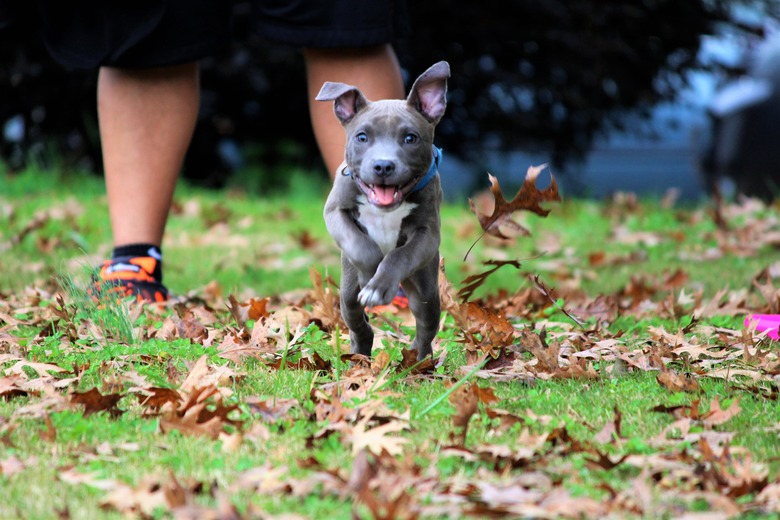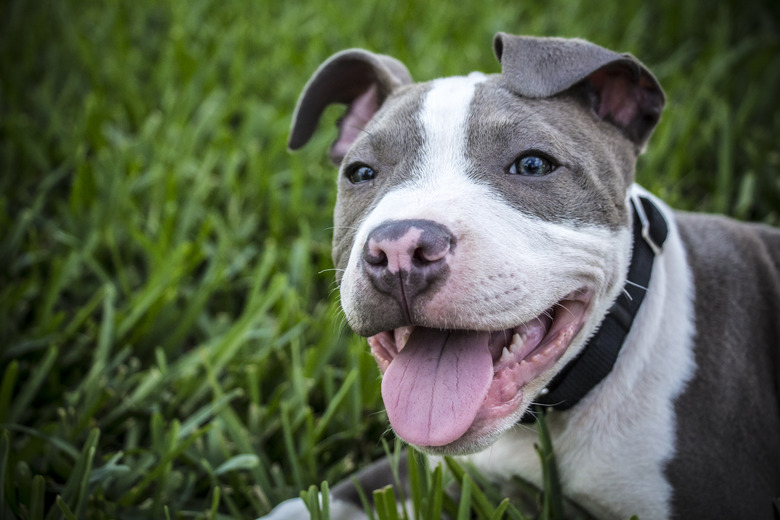How To Potty Train A 3-Month-Old Pit Bull
At 3 months old, a pit bull is still a puppy, which means he has a lot of energy and a lot of potential for learning all kinds of new skills. Because pit bull breeds are known for their intelligence and these dogs are not prone to eliminating in their living spaces, convincing them to follow a set of potty training rules should not be daunting.
With frequent potty breaks, you'll give your pup lots of chances for success to ensure that accidents are a thing of the past by the time your pup reaches adulthood. Plus, pit bull breeds are typically eager to please their pet parents and respond well to positive training techniques.
At what age is a pit bull fully grown?
At what age is a pit bull fully grown?
Pit bull breeds include the American Staffordshire terrier, American pit bull terrier, boxer, and American bulldog among other pit bull types, which are muscular dogs with broad heads. Any of these breeds are not considered fully grown until they reach around 18 months old.
A 3-month-old pit bull will weigh between 10 and 20 pounds, and it's important to start potty training your pit bull around this age. Pit bulls will respond well to training but only if given frequent potty breaks. That's because your puppy won't have a fully developed bladder until he's fully grown. At this age, a puppy can control his bladder around one hour for every month of age. Therefore, a 3-month-old pit bull should be taken for a potty break every three hours at minimum.
Establish a regular schedule
Establish a regular schedule
Establish a bathroom break schedule and use positive reinforcement to reward your puppy for the behavior you want. Take your 3-month-old pit bull out regularly to the same spot, preferably every one to three hours. You'll also want to take your pup out within 15 minutes of meals, before bedtime, after you wake up, and at least once during the night because of her age.
When your pup goes to the bathroom outside, praise her elaborately and give her a treat. Be sure to include play time with potty time except for late-night breaks. Plenty of exercise is great for energetic pit bull breeds and will encourage her to continue to want to potty outdoors.
Crate train your pit bull
Crate train your pit bull
Crate train your puppy because pit bulls won't soil what they consider their den. By crate training your puppy, you will provide him with a safe and comfortable space in which to spend time while you are not watching him.
It is important to remember that a 3-month-old pit bull should not be crated for more than one to three hours at a time. When not in the crate, watch your puppy carefully and keep him by your side. Remember to look for signs that he needs to go, like pacing, circling, whining, and sniffing. Immediately take your puppy out at the first of these signs.
Feed your pit bull regularly
Feed your pit bull regularly
Establish a feeding schedule in the morning, afternoon, and evening. Allow your pup to finish her meal and then take away the food so you can reliably predict when she'll need to go. It is important to monitor your puppy's eating and drinking habits so that you know when to take her out. About three hours before bed, take away food and water to prevent nighttime accidents.
Dealing with pit bull accidents
Dealing with pit bull accidents
A 3-month-old pit bull is very young, so accidents are likely. If you find that your puppy has had an accident in the house, do not reprimand him because he won't understand you're upset. Instead, clean it up immediately with an enzymatic cleaner to remove the scent, which could draw him back to the spot to eliminate again.
If you catch your pup in the act of going to the bathroom in the house, stop him with a firm "no!" Immediately take him outside to finish his business. Once he has gone outside, praise him for a job well done.
References
- The Humane Society of the United States: How to House-Train Your Dog or Puppy
- PitBulls.org: Housetraining Your Pit Bull Puppy
- Glamorous Dogs: Pitbull In The House: How to Potty Train A Pitbull Puppy?
- American Kennel Club: How to Potty Train Puppies: A Comprehensive Guide for Success
- The Animal Foundation: Is a Pitbull a Breed?
- Pawlicy Advisor: Pit Bull Growth & Weight Chart: Everything You Need to Know
- American Society for the Prevention of Cruelty to Animals Pet Health Insurance: How to Crate Train a Puppy

